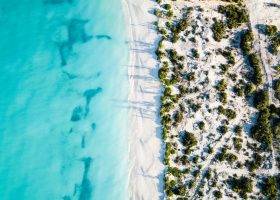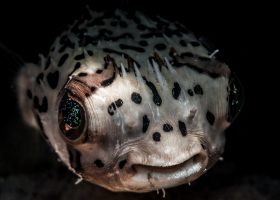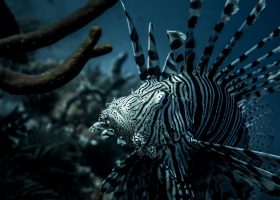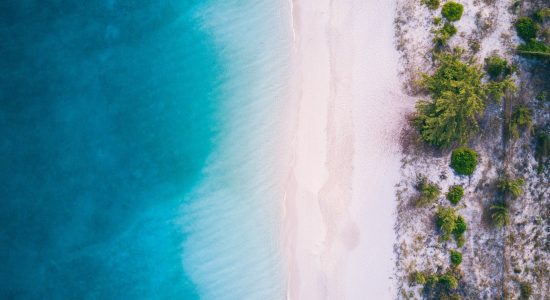Welcome!
The Turks and Caicos Islands are a small tropical archipelago nation found south of the Bahamas. We’re home to spectacular beaches, a pristine marine environment, luxury resorts, friendly people, and fine dining.
There’s so much to do and discover here in paradise. Incredible beaches, crystal clear and warm ocean water, abundant marine life and beautiful tropical wetlands are yours to explore. Quite simply, we’re the best vacation destination of the Caribbean.
Best time to dive?
Other than whales and to a lesser degree the larger sharks, all of the common sea animals can be seen year round. Generally, late summer tends to have the calmest weather and greatest visibility, but this period is also the hurricane season and a big storm can obviously cause major disruptions! Water temperature is generally consistent, reaching a low of about 75°f (24°c) in late January and a high of about 86°f (30°c) in July and August.
Info source by visittci.com
Best time to Dive?
Other than whales and to a lesser degree the larger sharks, all of the common sea animals can be seen year round. Generally, late summer tends to have the calmest weather and greatest visibility, but this period is also the hurricane season and a big storm can obviously cause major disruptions! Water temperature is generally consistent, reaching a low of about 75°f (24°c) in late January and a high of about 86°f (30°c) in July and August.
Info source by visittci.com
- {{ listingType.name }}
- prev
- next
Do you offer Diving services?
Promote your services and connect with divers
Are you a Scuba diver?
Join and get the best benefits for your next trip
Do you offer Diving services?
Promote your services and connect with divers
Are you a Scuba diver?
Join and get the best benefits for your next trip
Sea Life
Most of the sharks sighted around the islands are Caribbean reef sharks or lemon sharks, yet hammerheads, nurse sharks, and bull sharks are sometimes sighted.
An entire spectrum of reef fish can be found in the Turks and Caicos. Stoplight parrotfish are one of the most common species, and largely account for our incredible beaches. There are French, grey and queen angelfish, snappers and groupers of many types, queen triggerfish, black durgons, filefish, damselfish, trumpetfish, blue tangs, wrasse, jacks, and butterflyfish. Humpback Whales migrate past the Turks and Caicos during the winter months of January, February, March and April. Salt Cay tends to be the best for whales, but they can also be seen in the deeper water off the other main islands. Info Source by visittci.com
Dive Sites
The Turks and Caicos is situated on an expansive underwater plateau that rises 7000 feet (2100m) from the ocean floor, with most of the islands being located directly on the north edge of this plateau. The transitions from the 40-50 foot (12-15m) flat sandy ocean bottoms near land to the vertical walls of the plateau vary, and make for countless interesting dive sites. The north edges of the plateau tend to have distinctive spur and groove formations and the west and south edges offer impressive wall sites. Sand chutes, canyons and cracks are found at many sites and make for excellent swim-throughs.
Dive Sites info source by visittci.com












Providenciales
The Turks and Caicos is renowned for miles of exquisite barrier reefs, walls, clear waters and abundant wildlife. Many of the dive sites accessed off Providenciales are located in protected areas, mainly in the Princess Alexandra National Park, Northwest Point Marine National Park, and the West Caicos Marine National Park.
Grand Turk
Grand Turk is spectacular dive destination, with some of the finest barrier reef and wall sites in the tropical Atlantic. Grand Turk tends to support large densities of fish, sea creatures and coral, French Cay offers sharks, and West Caicos Marine National Park and Northwest Point feature dramatic edges and marine topography.
Salt Cay
The small island of Salt Cay is recognized mainly for two things: whale watching and diving. Like all of the main islands in the Turks and Caicos, walls define most dive sites on Salt Cay. Depths typically start around 40-50ft (12-15m) at the top, and continue into the thousands off the edge. Sea life is vibrant, with sharks, reef fish and pristine, undamaged coral formations. Visibility is usually excellent at 100ft (30m) or more.
North and Middle Caicos
All of the dive sites easily accessed from North and Middle Caicos are on the north barrier reef and consist mostly of spur and grove coral formations and wall sites. These sites are quite similar to the sites off Grace Bay, and ocean and visibility conditions are often similar.
How to Arrive
Turks and Caicos Islands are just one short flight from most cities in North America and Turks and Caicos flights are just at your fingertips… Only 90 minutes from Miami or three and a half hours from New York, escaping to paradise doesn’t have to be an arduous journey. A quick hop with some spectacular aerial views along the way and you can feel like you’ve landed on another planet entirely.
Providenciales International Airport (PLS) serves major airlines including Air Canada, American Airlines, British Airways, Delta, JetBlue, United Airlines and West Jet. Regional airlines include Bahamas Air, Caicos Express and interCaribbean Airways.
Info source by bluehaventci.com

